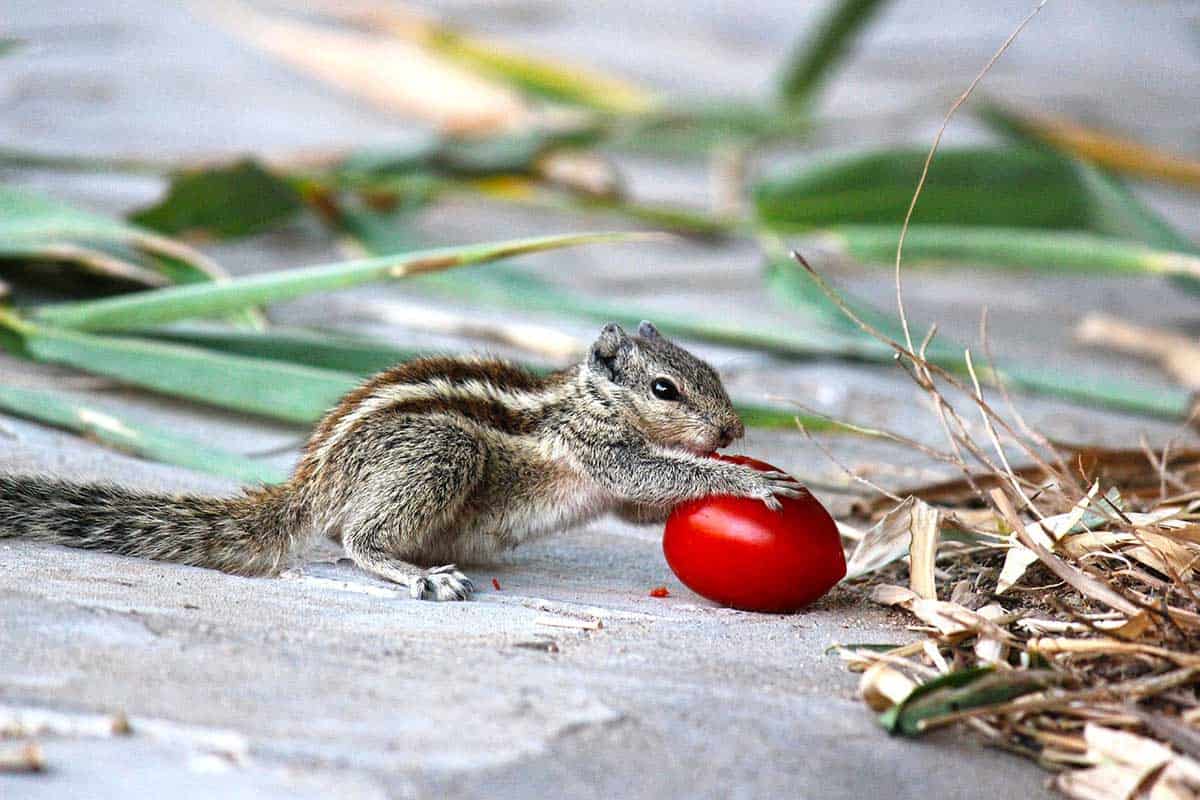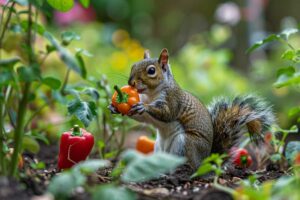This page may contain affiliate links. If you click and buy, we might get a small commission at no cost to you.
If you want to know how to keep animals from eating tomato plants, you’ve come to the right place. In this article we discuss 10 humane and chemical-free tips for protecting your tomatoes.
They’re brilliant red, ripe, and juicy. Tomatoes look appetizing for the gardener as well as the animals in the area. Besides the common culprits or rabbits, birds, and squirrels, other animals are also attracted to these plants.
You have to watch out for raccoons, moles, gophers, deers, and more. The last thing you want is to walk out into your garden and see damaged and bare tomato plants with no fruit left for your kitchen.
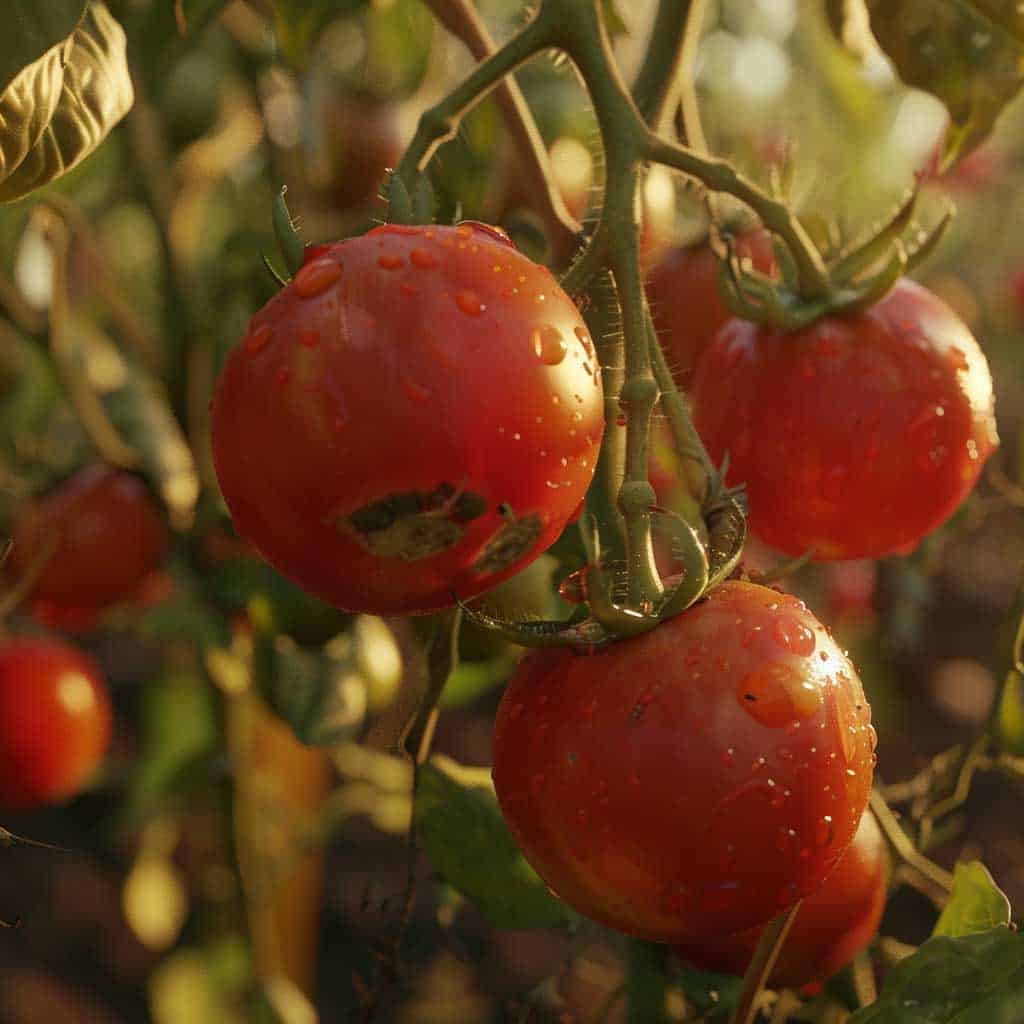
How to keep animals from eating tomato plants
1. Build a fence around the garden
Fences always come in handy when you want to keep unwanted visitors out. However, what type of fence you place around your garden will depend on the animals you are dealing with.

For example, the fence needs to be at least 8 feet tall to keep away deer. If you’re avoiding rabbits, make sure the fence gaps are one-inch or less and the fence sits below the soil level so they can’t dig their way underneath.
2. Put up garden netting
Since fences and pots don’t keep away the birds, consider adding something like this protective netting to your tomato plants. Garden netting is easy to install and comes in various mesh sizes.
You also want to make sure you suspend the netting over your plants by at least 6 inches. This way, the birds can’t just sit on the net to pick at the fruit within their reach. Netting with small enough holes can also prevent large insects from damaging your crops.
3. Install motion sensor lights
If you find the tomato-eating culprits in your garden come out at night, consider installing some motion sensor lights to scare them away. These can be useful for night feeders such as raccoons, skunks, rats, and deer. Even rabbits may be eating your plants around dusk or dawn.
The light can startle them and encourage them to run away, especially when they first encounter it. However, if you use this method long-term, some animals might learn it’s not harmful.
4. Place cages or guard tents
You can purchase plant cages or guard tents to protect your tomato plants. If you are putting a cage around your tomatoes, make sure to also add the garden netting to deter the birds. Guard tents are also easy to assemble as a protective measure against birds, squirrels, and rabbits. They might not keep away burrowers but you can easily water your plants through the mesh.
5. Use raised beds or large pots
Planting your tomatoes in raised beds that are at least 18 inches high can help protect your plants. Smaller animals such as rabbits will find them difficult to reach. Also, make sure you have around 6 inches of wood planks below the soil to prevent burrowers from getting to the raised beds from underground.
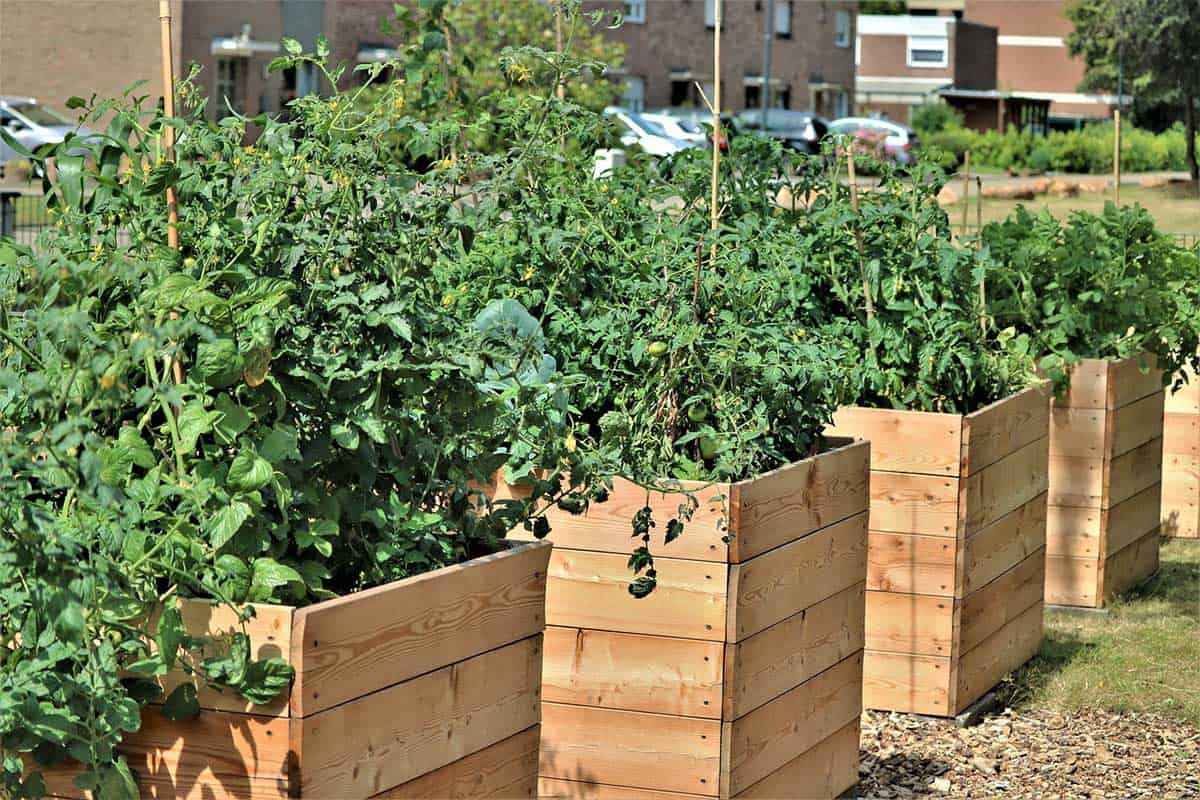
If you have limited space in your garden, large pots also do the trick for similar reasons. Having your tomato plants in pots also makes moving the plants around your garden easier, including closer to motion sensor lights.
6. Install motion-activated sprinklers
Most animals don’t enjoy being sprayed with water when they are trying to take a bite of your tomatoes. If you install motion-activated sprinklers near your plants, you can surprise the animals as soon as they approach your tomatoes.
This sends the signal its a forbidden areas and trains the animals to stay away from your garden. While your tomatoes would enjoy the extra drink, do be mindful of water usage laws in your area and your water bill when using this method.
8. Grow unappealing plants nearby
One way to deter animals from hanging out near your tomato plants to feast is to grow unappealing plants nearby. This can help limit the number of unwanted visitors.
For example, plants that are prickly, have a strong smell, or are tough to eat are considered animal-resistant plants. You might need to do a little research to see what type of plants work best for what animal species.
Rabbits generally dislike the strong smell and taste of rosemary, thyme, and sage. While goats dislike the smell of lavender, peppermint oil, sage, and hydrangeas. If you want to keep squirrels away, try planting mint, including peppermint or spearmint nearby.
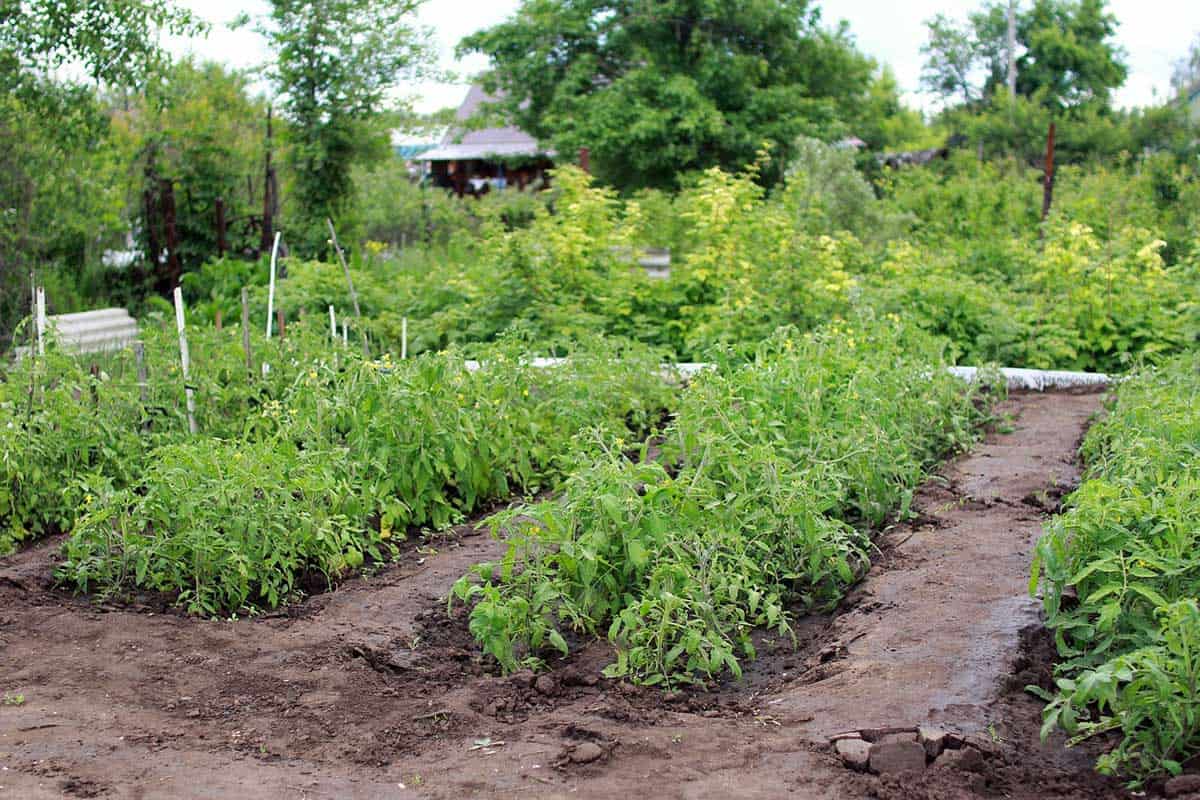
7. Place ultrasonic animal deterrents
A more water-friendly option is to stick ultrasonic animal deterrents in the ground. They have motion sensors to emit noises when an animal approaches and can increase in frequency until the animals leaves.
Since wild animals prioritize their safety, startling sounds is a safe way to scare them away. Some products also have different sensitivity modes you can adjust for greater effectiveness with different types of animals.
9. Add garlic to your garden
Garlic is a gardener’s best friend when it comes to keeping away animals. Most rodents and deers dislike the strong smell of garlic and will steer clear if it’s around. You can crush cloves into a spray bottle with water or use a garlic oil concentrate for something stronger.

Another effective method is to crush garlic cloves into a strip of old pantyhose and tie it loosely around your plant. You can also purchase garlic oil-repellent clips that can be clipped to your plant, placed in vole tunnels, or placed at the base of fences.
10. Use a urine deterrent
While this isn’t the most glamorous tip, spraying fresh urine around your plants can be an effective animal deterrent. Whether you encourage your pets to pee by your tomato plants, use your own urine in a spray, or purchase urine spray on Amazon, the scent can be a red flag for smaller animals.
It makes them believe that a bigger predator is lurking nearby. They will likely choose survival over eating your tomatoes. Make sure you apply fresh urine at least weekly and always right after it rains.
